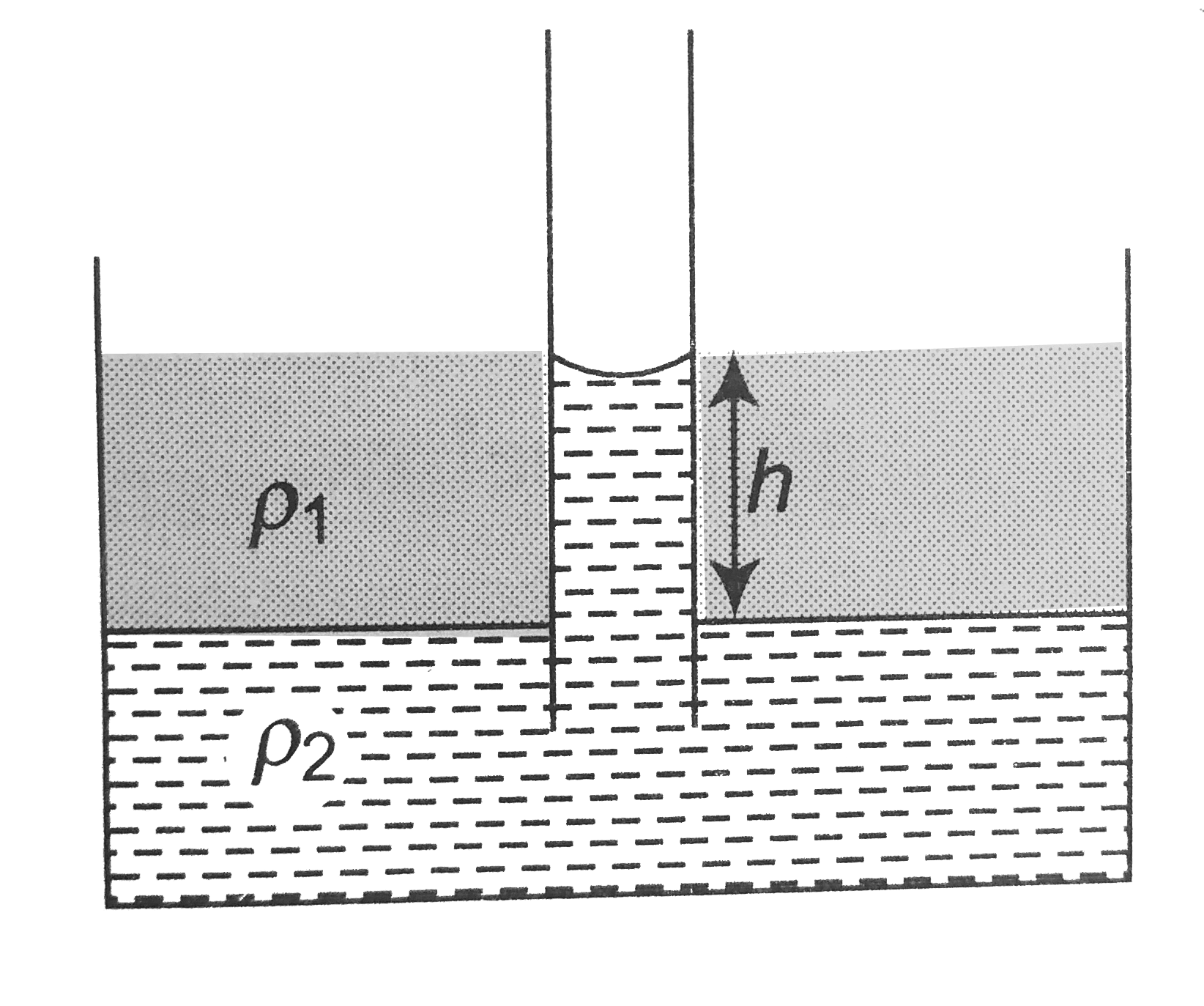The rise of a liquid in a capillary tube is due to :
Boiling
Evaporation
Surface tension
Viscosity
To determine the reason for the rise of a liquid in a capillary tube, we need to analyze the options provided and understand the underlying principles of fluid mechanics.
1. Understanding Capillary Action:
- Capillary action is the ability of a liquid to flow in narrow spaces without the assistance of external forces. This phenomenon occurs in thin tubes (capillaries) and is a result of intermolecular forces.
2. Identifying the Forces at Play:
- The rise of liquid in a capillary tube is influenced by two main forces: adhesive forces (the attraction between the liquid molecules and the molecules of the tube) and cohesive forces (the attraction between the liquid molecules themselves).
3. Analyzing the Options:
- a. Boiling: This refers to the rapid vaporization of a liquid, which does not explain the rise of liquid in a tube.
- b. Evaporation: This is a surface phenomenon where molecules escape from the surface of a liquid, not related to the rise in a capillary tube.
- c. Surface Tension: This is the property of the liquid's surface that allows it to resist an external force. It plays a crucial role in forming the meniscus in the tube.
- d. Viscosity: This is a measure of a fluid's resistance to flow, which does not directly cause the rise in a capillary tube.
4. Conclusion:
- The rise of a liquid in a capillary tube is primarily due to surface tension. The adhesive forces between the liquid and the walls of the tube are stronger than the cohesive forces within the liquid, causing the liquid to rise and form a concave meniscus.
Final Answer:
The rise of a liquid in a capillary tube is due to c. surface tension.
- Capillary action is the ability of a liquid to flow in narrow spaces without the assistance of external forces. This phenomenon occurs in thin tubes (capillaries) and is a result of intermolecular forces.
- The rise of liquid in a capillary tube is influenced by two main forces: adhesive forces (the attraction between the liquid molecules and the molecules of the tube) and cohesive forces (the attraction between the liquid molecules themselves).
- a. Boiling: This refers to the rapid vaporization of a liquid, which does not explain the rise of liquid in a tube.
- b. Evaporation: This is a surface phenomenon where molecules escape from the surface of a liquid, not related to the rise in a capillary tube.
- c. Surface Tension: This is the property of the liquid's surface that allows it to resist an external force. It plays a crucial role in forming the meniscus in the tube.
- d. Viscosity: This is a measure of a fluid's resistance to flow, which does not directly cause the rise in a capillary tube.
- The rise of a liquid in a capillary tube is primarily due to surface tension. The adhesive forces between the liquid and the walls of the tube are stronger than the cohesive forces within the liquid, causing the liquid to rise and form a concave meniscus.
The rise of a liquid in a capillary tube is due to c. surface tension.
Topper's Solved these Questions
- STATES OF MATTERBOOK - AAKASH INSTITUTE ENGLISHCHAPTER - STATES OF MATTEREXERCISE - TRY YOURSELF
34 Videos
- STATES OF MATTERBOOK - AAKASH INSTITUTE ENGLISHCHAPTER - STATES OF MATTEREXERCISE - ASSIGNMENT (SECTION-A)
50 Videos
- STATES OF MATTERBOOK - AAKASH INSTITUTE ENGLISHCHAPTER - STATES OF MATTEREXERCISE - ASSIGNMENT (SECTION-D)
14 Videos
- SOME BASIC CONCEPTS OF CHEMISTRY BOOK - AAKASH INSTITUTE ENGLISHCHAPTER - SOME BASIC CONCEPTS OF CHEMISTRY EXERCISE - ASSIGNMENT SECTION J (Aakash Challenges Questions)
10 Videos
- STRUCTURE OF ATOMBOOK - AAKASH INSTITUTE ENGLISHCHAPTER - STRUCTURE OF ATOMEXERCISE - ASSIGNMENT (SECTION -D) Assertion-Reason Type Questions
15 Videos
Similar Questions
The rise of a liquid in a capillary tube depends on
View SolutionWhat do you mean by capillarity. Derive relation for the rise of liquid in a capillary tube on the basis of balancing force and explain the rise of liquid in a tube of insufficient length.
View SolutionA liquid of density ρ and surface tension σ rises in a capillary tube of diameter d. Angle of contact between the tube and liquid is zero. The weight of the liquid in the capillary tube is:
View Solution
A container is partially filled with a liquid of density ρ2 A capillary tube of radius r is vertically inserted in this liquid. Now another liquid of density ρ1(ρ1<ρ2) is slowly poured in the container to a height h as shown. There is only denser liquid in the capillary tube. The rise of denser liquid in the capillary tube is also h. Assuming zero contact angle, the surface tension of heavier liquid is
View SolutionThe correct curve between the height or depression h of liquid in a capillary tube and its radius is
View SolutionStatement-1: In gravity free space, the liqid in a capillary tube will rise to infinite height.
Statement-2: In the absence of gravity there will be no force to prevent the rise of liquid due to surface tension.
View SolutionThe angle of contact of a liquid in a capillary tube is 60∘. The shape of the meniscus is
View SolutionThe liquid in the capillary tube will rise if the angle of contact is
View SolutionIf a capillary tube of radius 1 mm is immersed in water , the mass of water rising in the capillary tube is M . If the radius tube is doubled , then the mass of water , that rises in the capillary tube will be
View SolutionThe rate of flow of liquid through a capillary tube in an experiment to determine the viscosity of the liquid increases
View Solution
